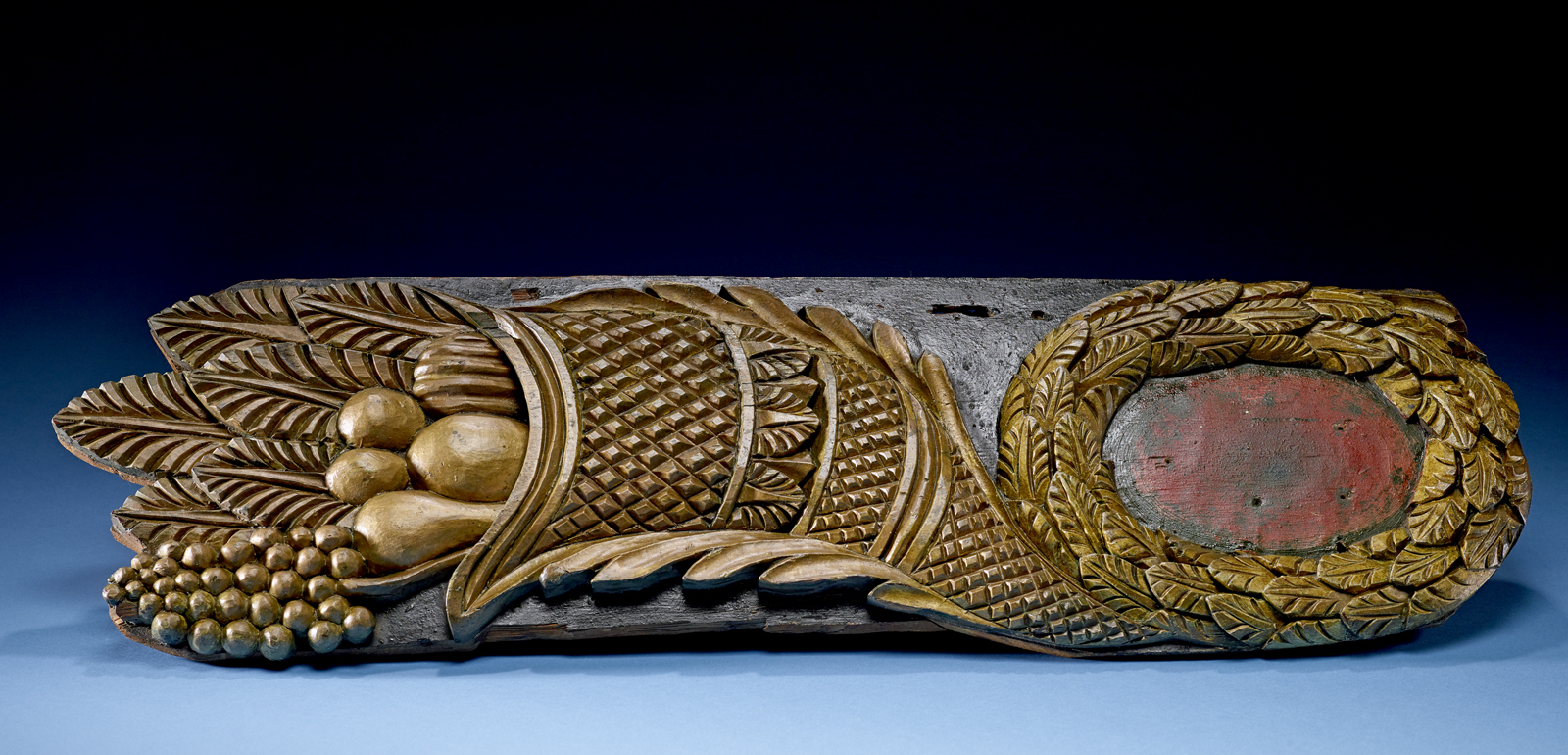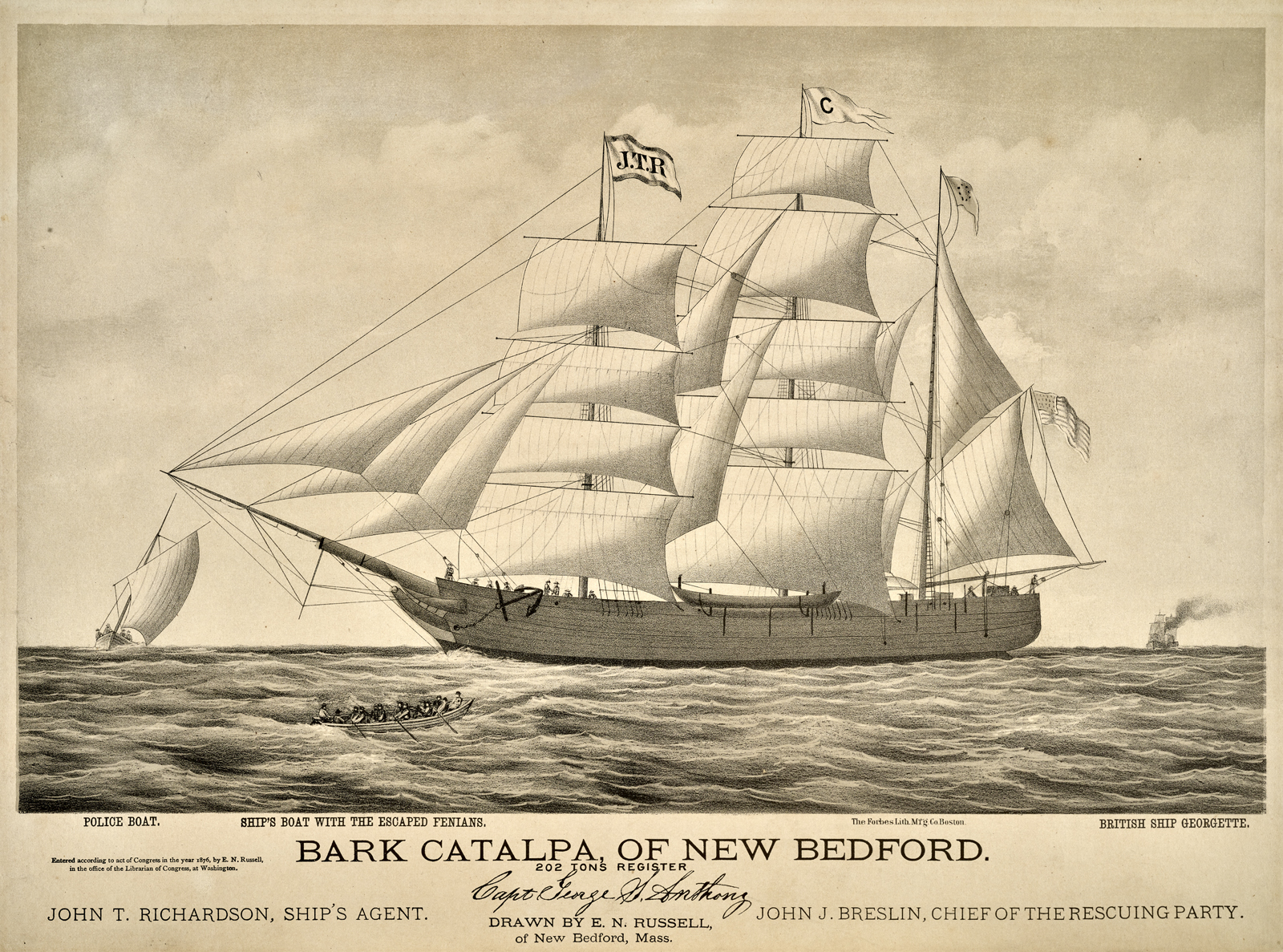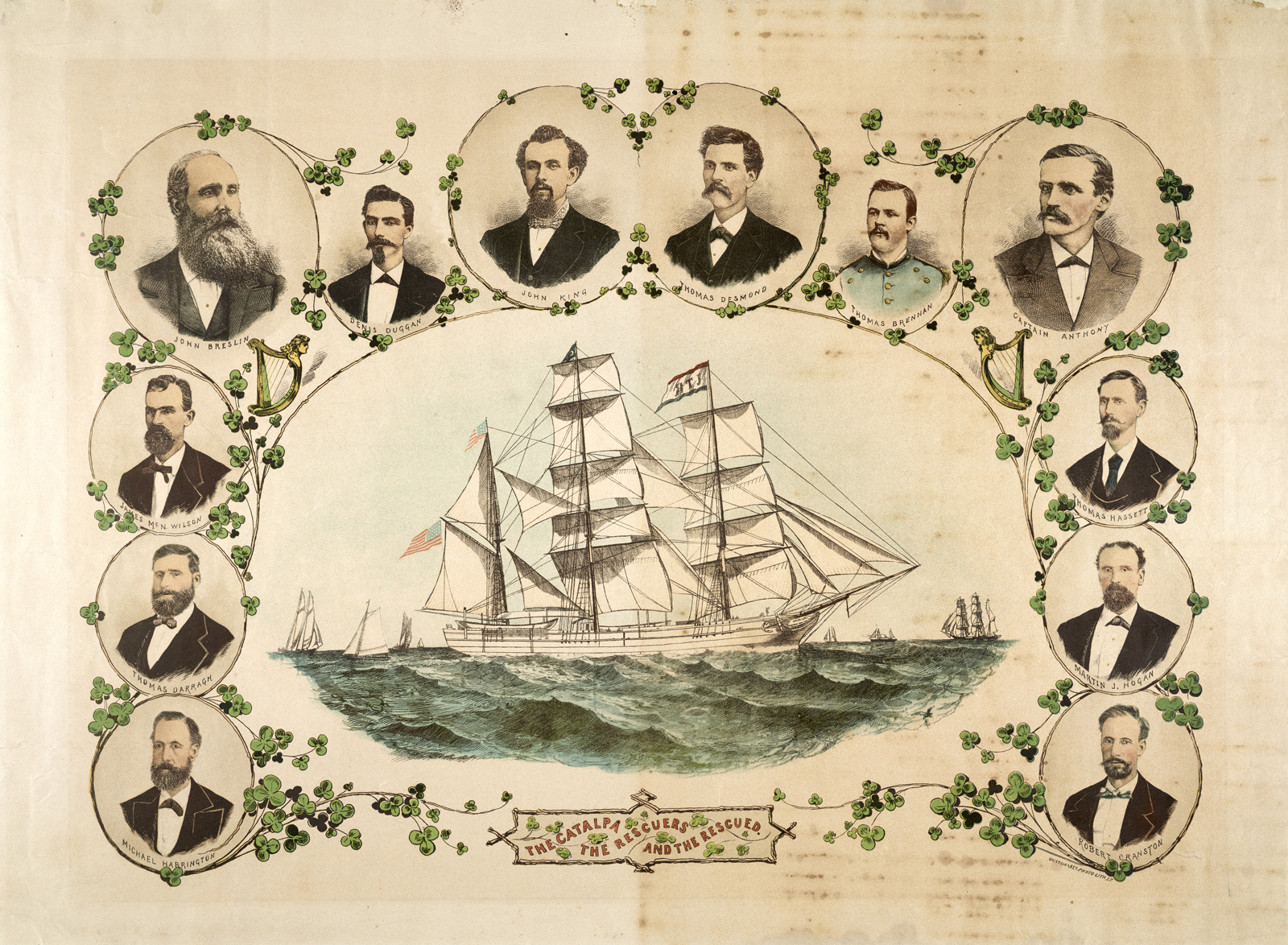In the mid-nineteenth century, if you are planning to pull off a major heist that starts in Australia and ends in New York City, what might you use as a getaway vehicle? How about a whaling bark named Catalpa? When combing the Museum’s Collection one day, I came across a stern carving with a cute cornucopia design. Curiosity got to me about where it came from. That’s when I learned about the bark Catalpa. I was more surprised to learn that the ship’s story actually had less to do with whaling, but was part of what became an adventurous prison break! The story of six Irish prisoners being freed from an Australian prison and brought to America sounds more like fiction than factual events. But it’s true, and here’s how it went down.

WHY AUSTRALIA?
From 1788 to 1868, convicted felons from Ireland, Scotland, England, and Wales were transported to penal colonies in Australia. There, they lived in cramped cells and were condemned to punishing manual labor. Fremantle Gaol in Western Australia was among the harshest of these penitentiaries. The Fenian movement or Irish Republican Brotherhood (IRB), was a secret society that flourished during the 1860s. It sought Ireland’s independence from Great Britain’s control. It was a crime to be a member of this organization, punishable by deportation to the Fremantle prison. Several men belonging to this group took part in a failed armed rebellion against British soldiers. They sailed on board Hougoumont, the last ship of convicts to be sent to Western Australia in October 1867, arriving at Fremantle in January 1868. Among them was John Boyle O’Reilly.
John Boyle O’Reilly made friends with Patrick McCabe, a priest, who had helped O’Reilly escape on board a ship that brought him to Boston in 1869. There, he joined the Fenian movement in America called Clan na Gael. By this time, the British government had granted conditional pardons to the remaining ‘civilian’ Fenians in Western Australia, but they were not permitted to return to Britain until their full sentences had expired. This left eight ‘military’ Fenians – including Thomas Darragh, Martin Hogan, James Wilson, Thomas Hassett, Michael Harrington, and Robert Cranston – still suffering in Fremantle Prison. Over the next several years, O’Reilly continued to press his Clan na Gael brothers to help the men escape from Fremantle as he did. By 1875, Clan na Gael managed to raise enough funds to plan a daring prison break. In March 1875, they found and purchased for $5,200 a three-masted, 202-ton New Bedford whaling bark named Catalpa.

1876
1934.1350.000001
Captain George S. Anthony, a Quaker from New Bedford, Massachusetts, was recruited to command the ship on its voyage. On Thursday, April 29, 1875, Catalpa and crew set sail on a rescue mission.
John Breslin and Thomas Desmond had arrived in Australia months before. Breslin, posing as a wealthy businessman interested in investing in Fremantle prison, was able to contact the six prisoners. He told them of Clan na Gael’s plan to break them out. Catalpa arrived in Australia in March 1876. After finalizing details, it was determined the best day to make the breakout was April 17. The six convicts were performing their prison duties right outside the prison walls. Desmond and Breslin snuck them onto two horse drawn buggies, and they raced to the coast. It was several hours before prison authorities noticed their absence. Once on the coast, they got into a small whaling boat and began rowing to Catalpa, anchored approximately 12 miles out in international waters. Unfortunately, a large storm came, and forced them to wait it out overnight. The next day, they completed their journey to Catalpa. But with no winds that day, the men onboard could not begin sailing home. Luck did not appear to be on their side.
“THIS SHIP IS SAILING UNDER THE AMERICAN FLAG AND SHE IS ON THE HIGH SEAS. IF YOU FIRE ON ME, I WARN YOU THAT YOU ARE FIRING ON THE AMERICAN FLAG.” CAPTAIN GEORGE S. ANTHONY
It was not until April 19, 1876, that Catalpa could set sail. But not without some issue. Authorities on board the nearby British steamer SS Georgette demanded to board Catalpa, in search of the missing prisoners. Captain Anthony denied their request, stating that they were an American vessel in international waters. SS Georgette gave some pursuit as Catalpa left but the British vessel could not fire upon it for fear of starting an international incident. Captain Anthony, his crew, and the six prisoners made their getaway from Australia. News of their audacious prison break made its way to America. When Catalpa arrived in New York City on August 19, 1876, it did so to a hero’s welcome. The Catalpa rescue was celebrated by Irish and Irish-Americans as an act of direct defiance to Great Britain. The American people empathized with the Irish people, for the Catalpa event in 1876 was almost exactly 100 years since America declared independence from Great Britain. The rescued Irishmen continued helping out the Fenian cause throughout their lifetimes. The six prisoners became known in history as the “Fremantle Six.”

1950.0445.000001
What intrigues me most about this story is that it took years of planning, which required near perfect precision and timing to be executed. However, several elements did not quite go according to plan. Despite the few unexpected hiccups, things still managed to work out for Captain Anthony and the Fremantle Six in the end.